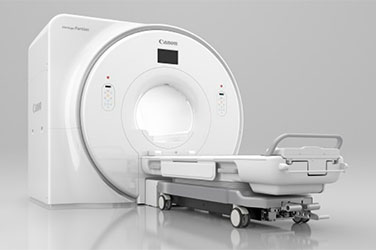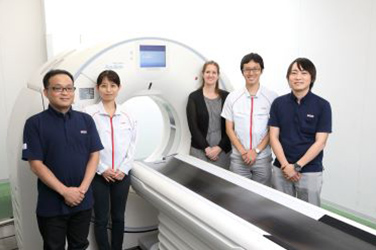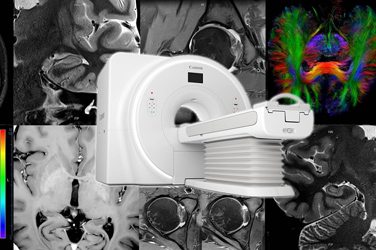
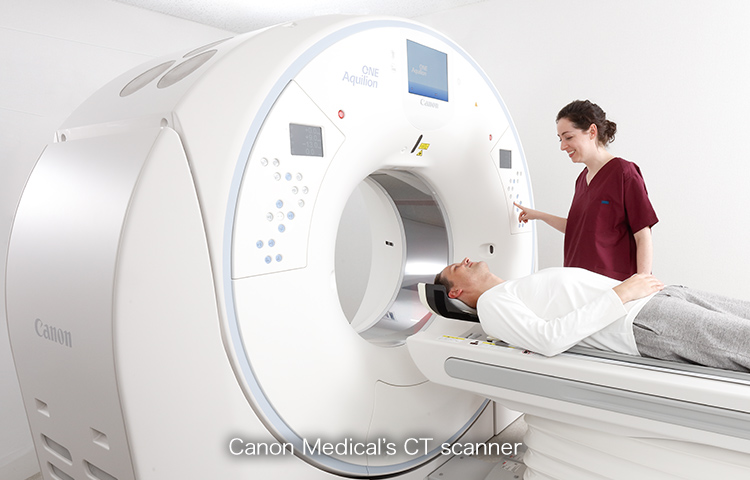
CT Scanners
Canon Medical Systems has developed technology that uses deep learning to produce high-resolution CT images at a low radiation dose.
The technology reduces risk for patients while providing high-quality images to healthcare personnel for accurate diagnosis.
July 11, 2019Featured Technology
The Relationship Between CT and X-Ray Dose
X-ray Computed Tomography (CT) equipment has a significant role in providing clinicians with the tools for diagnosis and treatment planning.
CT image quality is closely related to radiation dose. High image quality can be obtained with greater dose, but that means increased X-ray exposure for the patient. A low radiation dose reduces exposure to radiation, but the trade-off is lower image quality.
To solve this problem, Canon Medical Systems (Canon Medical) has been developing various innovative technologies to produce high-resolution images without compromising on radiation dose. One is AIDR 3D (Adaptive Iterative Dose Reduction 3D), which reduces exposure by 75%. Another is FIRST (Forward projected model-based Iterative Reconstruction SoluTion), which further reduces exposure and improves image quality. Such technologies produce high-quality images while reducing patients’ radiation dose. These new technologies greatly expand the practical uses for CT to applications such as perfusion and dynamic movement.
AiCE, a CT Imaging Technology Using Deep Learning
Canon strives to continue to reduce radiation dose on patients to improve their quality of life. In April 2018, Canon released a high-resolution CT system equipped with AiCE (Advanced Intelligent Clear-IQ Engine), CT imaging technology using deep learning.
AiCE is a state-of-the-art technology designed to reduce noise found in CT images through deep learning while producing high-quality images. The clearer images allow for a more accurate diagnosis at the low radiation dose level no different from that of a normal chest X-ray. AiCE offers exceptional noise reduction while eliciting details in the CT image.
Also, with conventional CT systems, the image processing used to produce high-resolution images generally takes a lot of time. AiCE harnesses the computational power of deep learning neural networks (a network structure patterned after the connectivity of neurons in the human brain) to reduce noise, resulting in faster image output that contributes to improved workflows in the healthcare field.
Global Collaboration with Leading Hospitals
Canon Medical actively promotes product development through joint research with clinical doctors. In working to make AiCE clinically available to the market, our global development team collaborated with the doctors and engineers at institutions providing state-of-the-art medical care to enable the system’s commercialization in the short period of about a year.
Looking ahead, we will continue to actively promote product development that employs deep learning and other cutting-edge technologies to improve the quality of life for patients and provide medical professionals with the best tools to help their patients.

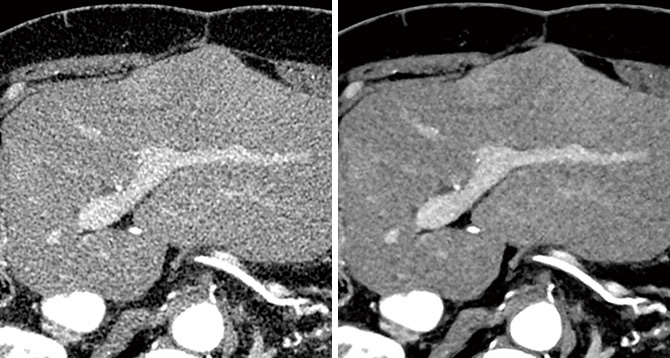
Conventional technology (left) vs. AiCE imaging (right)
Aiming to Benefit More Patients and Medical Institutions
The development of AiCE started with a strong desire to create a system that would help patients and doctors. My team and I believed in the power of AiCE and wanted to make this product available to the market ahead of other companies. In the end, we were able to achieve commercialization in the short period of just a year, thanks to the collaborative efforts of overseas research labs and doctors in medical clinics. The clinical doctors we worked with rated the AiCE system highly, calling it “indispensable to diagnostic imaging.” I was very happy to work on the development and commercialization with my team.
We will continue to improve and update AiCE, taking into account the latest trends in technology, so that we may further improve image quality and reduce radiation dose. Pooling our experience, we will strive to employ this technology in medical devices beyond CT to help clinical doctors and patients around the world.


Naruomi Akino
Deputy Manager of CT Systems Development Dept. System Group
Canon Medical Systems


